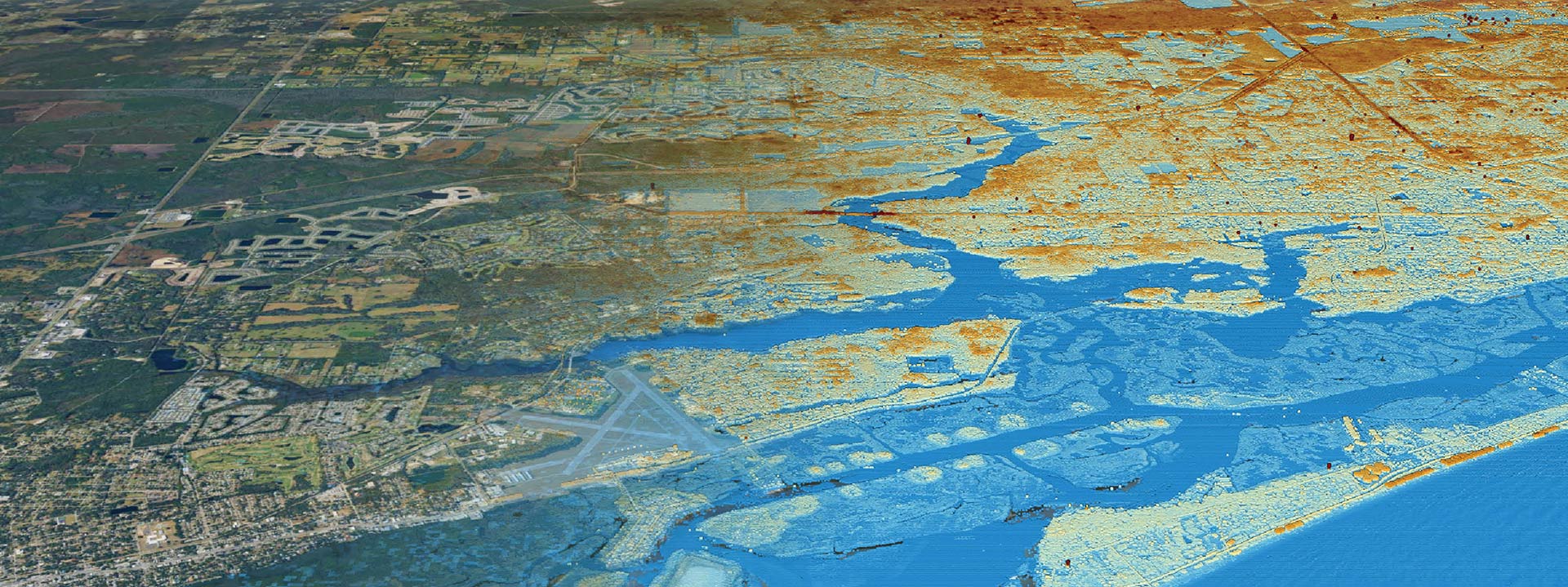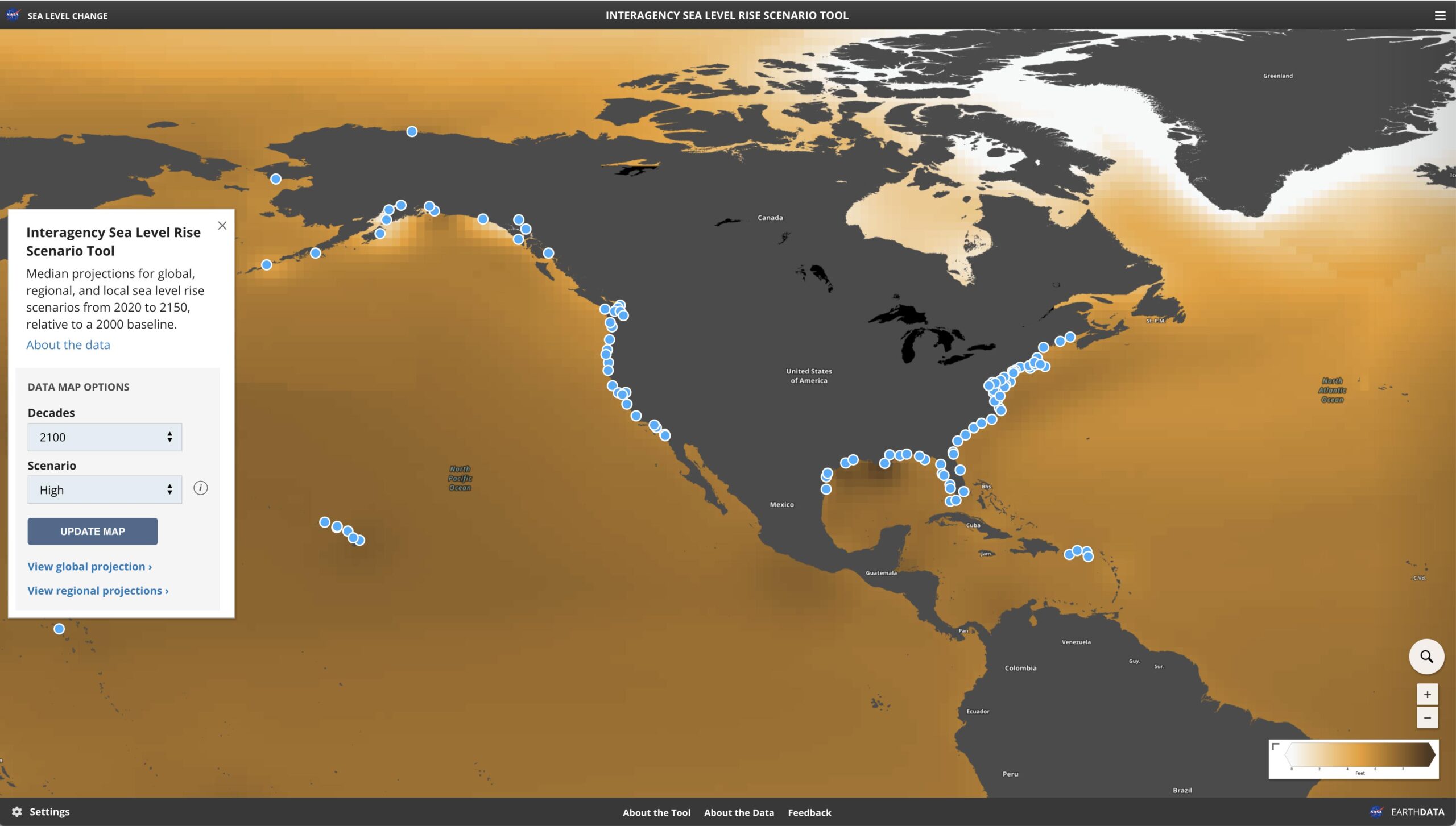Coastal Communities & Flood Modeling
Sea levels have been shown to be increasing at higher rates than previous years. As global temperatures of the earth’s surface begin to increase, glaciers and the polar caps are experiencing higher rates of melting. Using annual Landsat images, Mark Fahnestock and his glaciologist colleagues at the University of Alaska Fairbanks created a time lapse video of Alaska’s Columbia glacier from 1972 to 2019, included below. The glacier has receded by more than 20 kilometers (12 miles) since 1980 alone.
How does this impact Florida?
Sea level rise is expected to impact coastal communities, including increase flooding risks, raise storm surges, threaten water supply and wastewater treatment, inhibit infrastructure planning, increase beach erosion and the need for beach renourishment, and cause changes to estuaries, tidal rivers and coastal forests. 40 inches of sea level rise will cause approximately $130 billion worth in damages, and predicted sea level rise for Florida ranges from 40 to 92 inches by 2120.
If you are interested in receiving a vulnerability assessment to see if your personal or business infrastructure may be impacted by future sea level-rise, contact us at climate-adaptation@clearviewgeographic.com, or visit our Climate Adaptation Division to see what a vulnerability assessment entails or schedule a meeting.



